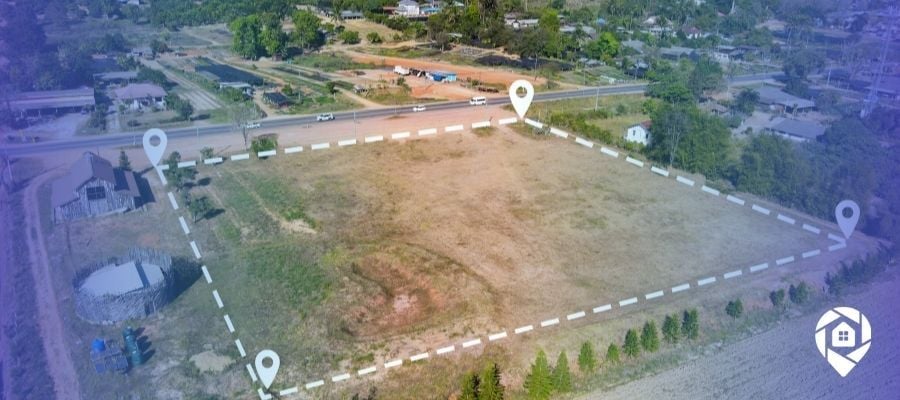
What Is ARV In Real Estate & How To Calculate

Real estate investors use a variety of financial metrics to analyze the potential profitability of a property, and whether or not updating makes financial sense. When flipping a house, how can you tell if the after repair value justifies your initial purchase? This is where after repair value (ARV) comes in.
Among the different metrics, ARV is one of the handiest to use when analyzing different rental deals. Using ARV in real estate helps an investor to better understand how much money to put into a property, and if a property is a worthwhile investment.
What is ARV in real estate?
ARV is an estimate of what a property is worth after all repairs and updating have been made. It’s not to be confused with the annual rental value generated, but instead is the anticipated value of the property.
ARV is calculated by adding the current property value to the value created by repairs, renovations, and updating:
- ARV meaning = Property Value + Value of Renovations
When using real estate ARV it’s also important to note that “value” is not the same thing as “cost.”
While cost is the actual price paid for an upgrade like a kitchen renovation, value is the subjective opinion of what the upgrade is worth to a tenant or buyer, based on current market data and comparables.
Why ARV matters to real estate investors
Understanding ARV is important before closing on a rental deal because it helps an investor to anticipate if a property will be potentially profitable, and if a property is worth the time, money, and effort.
The ARV calculation is used by investors who flip houses, buy-and-hold investors seeking to generate more return on investment (ROI) by making updates to increase rental income, and by lenders offering short-term financing to fund a rehab project.
How to use comparables to estimate ARV
Estimating ARV in real estate is a mixture of art and science.
Not only must an investor accurately estimate the cost of needed repairs and the turnaround time for the work, he or she must also predict the value added to the property based on future market conditions.
To more accurately predict what a subject property will be worth after renovating and updating, an investor looks at what comparable properties have recently sold for. Ideally, the comps have sold within the past 30-60 days, are near the subject property being evaluated, and have recently been renovated.
Sales comparables take into account characteristics such as:
- Condition of the property
- Age of the property
- Finishings, features, and recent updating
- Number of bedrooms and bathrooms
- Total square footage
- Lot size
- Construction style (such as single level versus two-story)
For example, assume an investor found four comparable properties with features similar to those the subject property will have after all repairs and updates are done. If the comps have an average sales price of $150,000 and average 1,400 square feet in size, the average price of the comparables is $107 per square foot:
- $150,000 average price / 1,400 square feet = $107 per square foot
If an investor has a property with 1,420 square feet, the anticipated ARV based on the comparables would be $151,940:
- 1,420 square feet subject property x $107 per square foot comparable properties = $151,940 after repair value or ARV
Example of how to use real estate ARV
After running the comps and determining the ARV, the next step is to calculate the maximum allowable offer that can be paid for the subject property using the 70% Rule.
The 70% Rule is a guideline real estate investors use to screen potential investments.
One way of thinking about the 70% Rule is that the maximum amount of money an investor will put into a deal – including the property purchase price plus the cost of repairs - is 70% of the final value.
To illustrate how the 70% Rule works with ARV, let’s use the subject property from the previous section to calculate the maximum allowable offer (MAO) or maximum bid price.
By running comparables, an investor has determined that the ARV of the subject property is $151,940. If the estimated repair costs are $20,000, the MAO would be $86,358:
- MAO = (ARV x 70%) – Estimated Repair Costs
- $151,940 ARV x 70% = $106,358
- $106,358 - $20,000 estimated repair costs = $86,358 MAO
An investor could decide to pay more than the maximum allowable offer of $86,358. However, by doing so, an investor increases potential risk and reduces the amount of potential profits.
The 30% also serves as a safety margin when analyzing a deal. For example, repair costs could be underestimated or the after repair value could be overestimated, due to factors such as rising supply and labor costs or a change in the local housing market.
Tips for using ARV
ARV is a useful calculation to make when narrowing down a list of properties to invest in. Here are some tips for making the most of ARV:
- Factor in property carrying costs such as mortgage and interest payments, insurance, and property taxes while updates are being made.
- Review multiple repair estimates from several different contractors with a detailed list of work and costs to more accurately predict repair expenses.
- Be prepared for undiscovered hidden damages after renovations have begun, such as a crack in a load bearing wall, a damp subfloor, or crumbling concrete or brick after the drywall has been removed.
- Understand the housing market conditions can change, and that home prices can go down as well as up, which is one reason why investors strive to complete updates and repairs as quickly as possible.
- Realize that an appraiser or tenant may see less (or more) value in renovations completed than an investor might, which in turn affects the projected ARV and profitability of an investment.
Closing thoughts
ARV in real estate is used to determine what the after repair value of a property should be after all renovations are complete. By using ARV along with the 70% Rule, an investor is better able to calculate the maximum price to pay for a property, and decide whether or not a deal makes financial sense.
While ARV isn’t the only financial calculation an investor can use, it can be a good way to project the potential return on an investment to find the most profitable opportunities for investing in real estate.

About David Lecko
David Lecko is the CEO of DealMachine. DealMachine helps real estate investors get more deals for less money with software for lead generation, lead filtering and targeting, marketing and outreach, and acquisitions and dispositions.



